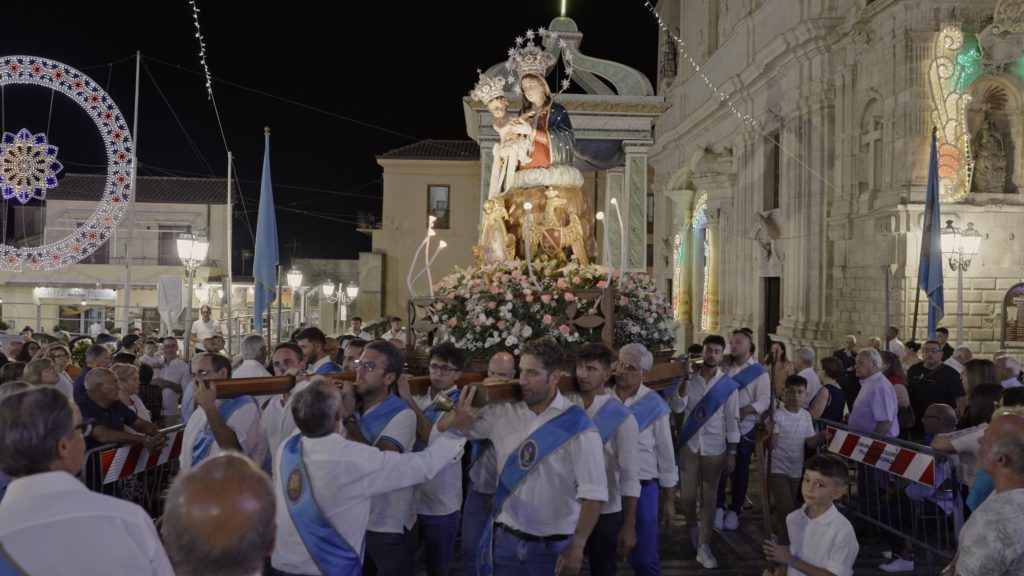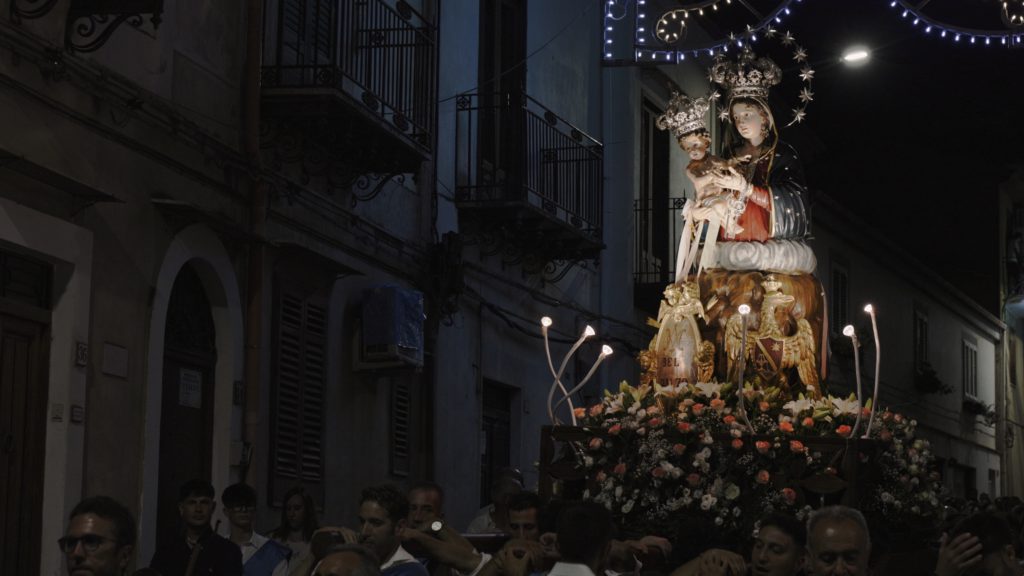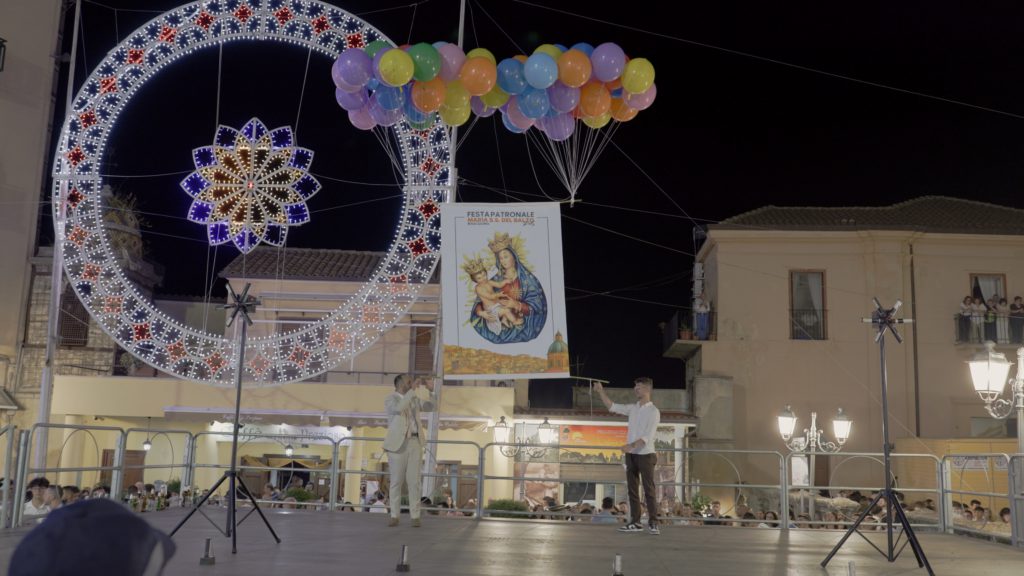Celebration of the Madonna del Balzo of Bisacquino
The Madonna del Balzo (Our Lady of the Cliff) is the Patroness of Bisacquino, her celebration finds its roots in Bisacquino’s history with a XVII century’s popular legend. Legend goes that on Mount Triona (where the Madonna del Balzo sanctuary has been historically built) a mysterious light appeared in front of a pastor in 1661, the pastor kept the secret of such apparition, until three years later, in 1664, when the sacred image appeared where the pastor saw the light. On this second occasion, the sacred image appeared in the form of a bas-relief to two young boys who, after a fight over a game of cards, mistakenly hit the sacred image of the Madonna with a rock, from which a stream of blood began to flow in front of them; the boy who threw the rock came to dead-like state in front of such an event, and got revived only after his mother prayed the Virgin Mary to intercede for him: this is considered as the first miracle of Our Lady of the Cliff.
The Sanctuary was built on 1681 by Vincenzo Nicolosi, a local architect. During the works for the construction of such Sanctuary, a second miracle took place: one of the workers fell from the scaffolding of the sanctuary and, after he fell, he was deposed in front of the sacred bas-relief of the Madonna and, shortly after, he regained consciousness. This second miracle reinforced not only the figure of Our Lady of the Cliff, but also the sacred role of her Sanctuary.
Concerning the celebration, it takes place from 13th to 15th of August, overlapping with the celebration of Virgin Mary’s Assumption in the Catholic liturgy. The celebration is preceded by the “quindicina”, a series of ritual collective prayers, taking place every day from the 1st August until the beginning of the celebrations, that is characterised by a specific ritual called “trasi la petra ri Maria, pi cunzulari a casa mia” ( literally, “enters the stone of Mary, to comfort my home”): each person taking part in the ritual would bring a stone from the Sanctuary to their homes.
On the 13th of August, the statue of the Madonna is brought from the Church of Saint Vito to the Church of the Bell Tower, where the wakes and the adorations of the Madonna take place. During the first day of celebrations, the bishop would officiate the Mass instead of the priest who officiated the “quindicina” in the previous days, after which, the town band would hold a concert. On the 14th, people would gather at the Sanctuary for the prayers od the evening. On the 15th, the actual day of the festivity, the procession for the Madonna would start; the various brotherhoods of the city would take part in the celebration and bring their banners while reciting the prayers and escorting the statue of the Madonna along the street. Once the procession gets to Piazza Triona, one last Mass for the Madonna of the Cliff would be officiated. The last moment of the celebration, that can be considered as the culmination of the festivity before the statue is brought back to the Church of San Vito, is “‘a vulata ‘ncielo” (literally, the flight in the sky): a large visual representation of Our Lady of the Cliff is hung up to balloons and had flying in the sky as a reference to Virgin Mary’s Ascension; tradition goes that once the balloons blow up and the Madonna’s figure lands to earth, there would be built a chapel in her honour. After the end of this ritual, the Madonna’s statue is finally brought back to the Church of San Vito, where the Celebration comes to its end.
This element has been included in the Register of Intangible Heritage of local interest of the Municipality of Bisacquino, as part of Intervention “Activation of the Observatory on the Intangible Cultural Heritage of the Territory through the application of the REIL methodology – Register of Intangible Heritage of Local Interest”, within the “BISACQUINO, BORGO DEL CINEMA E DELLE ARTI” project, funded by the NRRP (National Recovery and Resilience Plan), Mission: Digitalisation, innovation, competitiveness, culture and tourism, Component: Tourism and culture 4.0, Investment 2.1 “Attractiveness of villages” CUP D99I22000160006.




